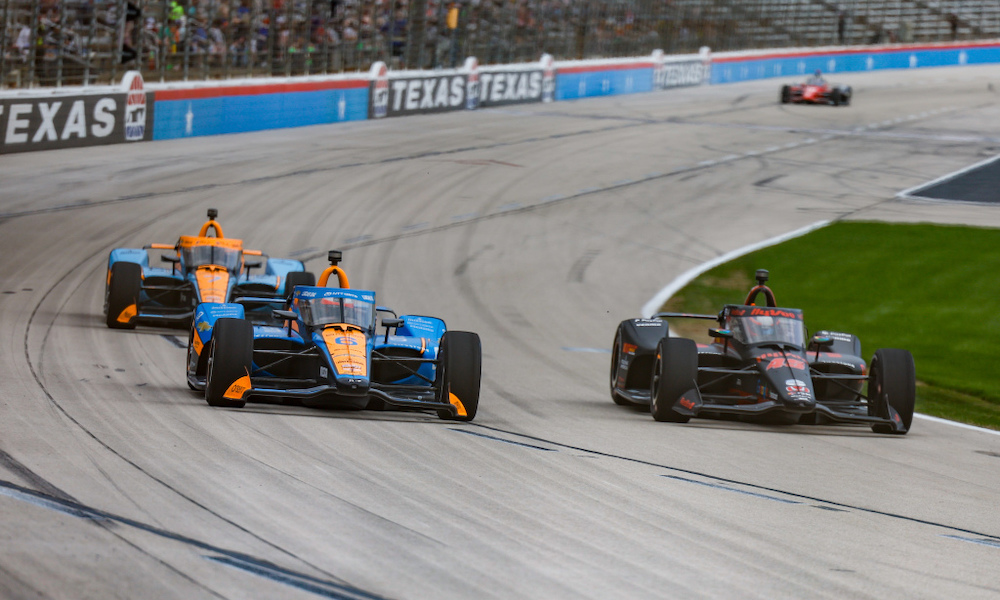Texas Motor Speedway’s longstanding place on the IndyCar calendar is in doubt after struggles to find a suitable date for the NTT IndyCar Series event during the compressed 2024 schedule have come to light.
With IndyCar’s television partner at NBC set to host next year’s Summer Olympics, some of the traditional IndyCar events that would normally run during that period have been moved to new dates before or after the race broadcasting blackout, and as a result, IndyCar finds itself in a date conflict for its traditional visit to the 1.5-mile TMS oval.
[lawrence-auto-related count=3 category=1408]
RACER understands three options have been outlined, with two weekends in early April floated as dates for IndyCar, and the other in September. With the April scenarios, the concept of a shared weekend with NASCAR is said to have been proposed but is considered unlikely. The idea of running the week after NASCAR is another possibility, but there appears to be limited interest in hosting two major events on consecutive weekends.
The September solution also has the look of something that could run into problems as IndyCar is expected to announce a schedule that already has August and much of September filled with events at Milwaukee, World Wide Technology Raceway, Portland, and Nashville.
RACER also understands the series and TMS will continue to try and find a positive outcome to give IndyCar a major oval race as a warmup to May’s Indianapolis 500, but with the announcement of the 2024 schedule due to be made on Monday, there’s limited time for resolutions to be made.
If TMS is not on the upcoming IndyCar calendar, the series would have Indianapolis as its lone superspeedway, with all of the remaining ovals falling within the 0.875- to 1.25-mile range.
